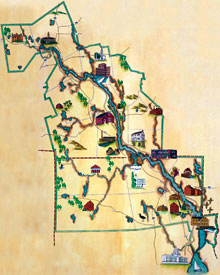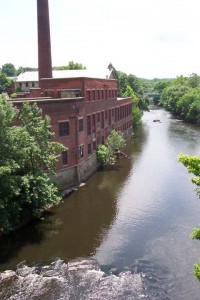
Interested in the future of the heritage movement? Concerned that the program has had to invest so much of its political capital on re-authorization and just hanging on to a flat line budget? Then the recent legislation establishing the Blackstone River Valley National Historical Park might be one way forward – offering stability and just possibly a new kind of partnership to conserve landscape scale resources.
A little background, the Blackstone Valley National Heritage Corridor has always been a special case. Created in 1986 as the second of a new kind of National Park Service (NPS) designation, the area was the poster child for this new approach to managing a living landscape. However, in recent years the NPS seemed to retreat from this bold strategy. A special resource study for the Blackstone Valley recommended creating a traditional park around a cluster of historic sites – a very reduced footprint indeed! See Blackstone River Valley: Sounding a Retreat from Landscape Scale Work?
So it is very good news that as part of the recent National Defense Authorization Act of 2015, Congress authorized the Blackstone River Valley National Historical Park with some very expansive language.
The park was created with a dual purpose to preserve, protect and interpret the industrial heritage as well as its urban, rural and agricultural landscape that provides the overarching context for the region. Along with individual industrial sites, the park boundaries include the Blackstone Canal and the Blackstone River and its tributaries. The legislation also recognizes the role of the Blackstone River Valley National Heritage Corridor. It authorizes the park to enter into cooperative agreements with the heritage corridor and to offer a range of technical assistance to resources outside the official park boundary.

The new park along with the re-authorization of the heritage corridor to the year 2021 in the recent Omnibus Budget Bill provides a new opportunity to conserve the Blackstone Valley on a landscape scale. Charlene Perkins Cutler, the executive director of the Blackstone River Valley Heritage Corridor certainly sees the new designation this way, saying “This gives recognition to the importance of the entire watershed and the heritage corridor as the birthplace of the industrial revolution,”
Many people have worked hard to pass legislation that ensures that the tools for landscape scale work are at the ready. The next three years will be critical. Will the new national park fashion a management plan that takes advantage of these sweeping authorities? Will the heritage corridor be made a full partner in preserving and interpreting the larger landscape? Can the permanent presence and sustainable funding of a park unit serve as home base to continue the innovative holistic approach to the Blackstone Valley? Only time and more hard work will tell if this is the new model for heritage development.


